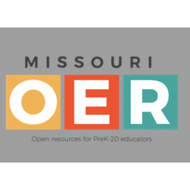Missouri Compromise – Free vs. Slave States
(View Complete Item Description)The purpose of this activity is to introduce students to the Missouri Compromise and the issues associated with the expansion of slavery in the Antebellum period of United States history. Students will begin the activity by creating a map that represents the Missouri Compromise’s impact on the United States. This map will serve as a backdrop for the activity while introducing students to political and cultural sectionalism (northern and southern states and the issue of slavery) in the early 1800s. After students complete the map, they will answer several questions using it. Students will also be prompted to examine aggregated data from the 1820 Census and a map titled “Mapping Slavery in the Nineteenth Century” to make comparisons and draw conclusions about slavery, specifically in Missouri.
Material Type: Activity/Lab




















